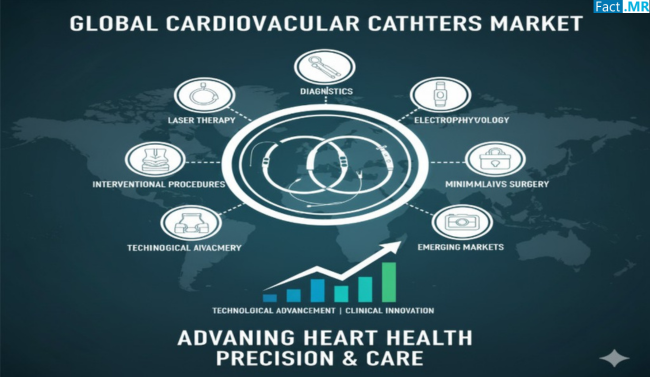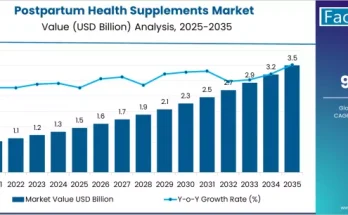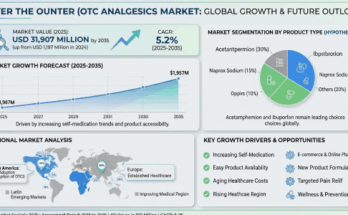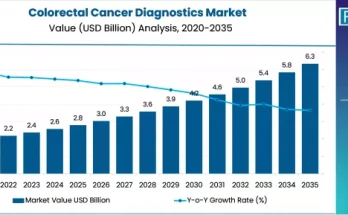The cardiovascular catheters market is witnessing significant growth as advancements in medical technology transform the diagnosis and treatment of heart diseases. Cardiovascular catheters are vital tools used in minimally invasive procedures to treat coronary artery disease, arrhythmias, and other cardiac conditions. By enabling precise navigation within blood vessels, these devices allow physicians to perform complex interventions with improved safety and accuracy.
Increasing prevalence of cardiovascular disorders, rising awareness of early diagnosis, and the growing preference for minimally invasive procedures are driving the adoption of cardiovascular catheters. Hospitals, cardiac centers, and outpatient clinics are increasingly investing in advanced catheter technologies to enhance patient outcomes and reduce procedural risks.
Market Overview
Cardiovascular catheters are specialized medical devices designed to access the heart and vascular system for diagnostic, therapeutic, and interventional purposes. These devices include guiding catheters, diagnostic catheters, ablation catheters, and balloon catheters, each serving specific functions in cardiac care.
The adoption of these catheters is fueled by technological innovations such as steerable and flexible designs, drug-eluting coatings, and integration with imaging and navigation systems. These enhancements allow for higher procedural accuracy, reduced complications, and faster recovery times for patients.
As cardiovascular diseases remain a leading cause of mortality globally, the demand for catheters that enable efficient, safe, and minimally invasive procedures continues to grow. Clinicians are increasingly relying on devices that optimize workflow and deliver reproducible results in high-volume cardiac care settings.
Regional Insights
North America dominates the cardiovascular catheters market, driven by a robust healthcare infrastructure, advanced cardiac care facilities, and the presence of major catheter manufacturers. The region’s focus on research, innovation, and adoption of cutting-edge technologies supports the widespread use of cardiovascular catheters.
Europe is another key market, supported by an aging population, high prevalence of cardiovascular disorders, and favorable reimbursement frameworks. Countries such as Germany, France, and the U.K. are witnessing increasing integration of advanced diagnostic and interventional catheters in clinical practice.
Asia-Pacific is emerging as a significant market due to growing healthcare expenditure, rising awareness of cardiac care, and expansion of minimally invasive procedures. Countries like Japan, India, and China are investing heavily in cardiac infrastructure, while medical tourism and improved access to specialized care further drive the demand for cardiovascular catheters.
Key Trends & Forecast
Several trends are shaping the cardiovascular catheters market:
- Minimally Invasive Interventions: There is a growing preference for less invasive procedures that reduce hospital stays, improve recovery times, and minimize procedural risks.
- Technological Advancements: Innovations such as steerable catheters, imaging-compatible designs, and drug-eluting materials enhance precision and treatment outcomes.
- Integration with Imaging Systems: Advanced catheters equipped with sensors and imaging guidance improve procedural accuracy and allow real-time monitoring.
- Emergence of Smart Catheters: Connected devices that capture real-time physiological data are enhancing treatment personalization and predictive analytics in cardiac care.
- Collaborations and R&D Investments: Strategic partnerships between device manufacturers, research institutions, and hospitals are accelerating product development and clinical adoption.
These trends indicate a market moving toward smart, efficient, and patient-centered cardiac interventions.
Applications & End-Use Outlook
Cardiovascular catheters are extensively used in diagnostic, therapeutic, and interventional cardiology:
- Diagnostic Applications: Catheters enable physicians to evaluate blood flow, detect blockages, and measure heart pressures, aiding in accurate diagnosis and treatment planning.
- Therapeutic Procedures: Balloon angioplasty, stent deployment, and ablation therapy rely on advanced catheters to restore normal blood flow and correct arrhythmias.
- Hospitals and Cardiac Centers: Hospitals and specialized cardiac centers represent the primary end users, focusing on high-volume procedures and patient safety.
- Outpatient Clinics: Increasing preference for outpatient cardiac interventions is boosting adoption of compact and user-friendly catheter systems.
As cardiovascular care emphasizes early intervention and precision treatment, the role of catheters in both preventive and therapeutic applications is expected to expand further.
Conclusion
The cardiovascular catheters market is entering a transformative phase, driven by technological innovation, increasing prevalence of heart diseases, and rising adoption of minimally invasive procedures. These devices are pivotal in improving procedural accuracy, reducing complications, and enhancing patient outcomes.
With continuous advancements in catheter design, integration with imaging systems, and growing clinical adoption, the market is poised for sustainable growth. As healthcare providers prioritize precision, efficiency, and patient-centered care, cardiovascular catheters will continue to play a central role in modern cardiac treatment and intervention strategies.



